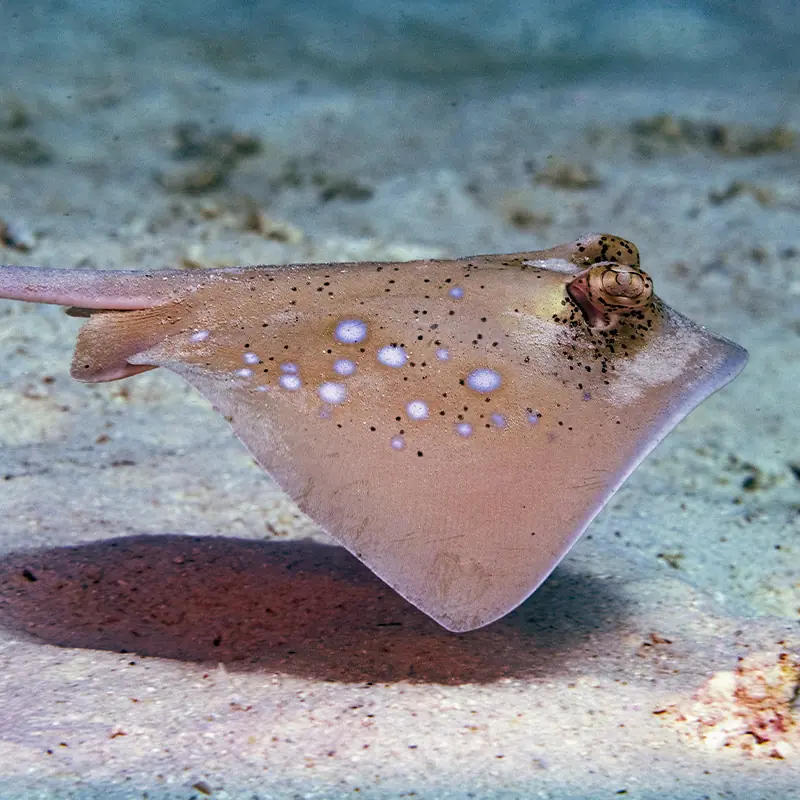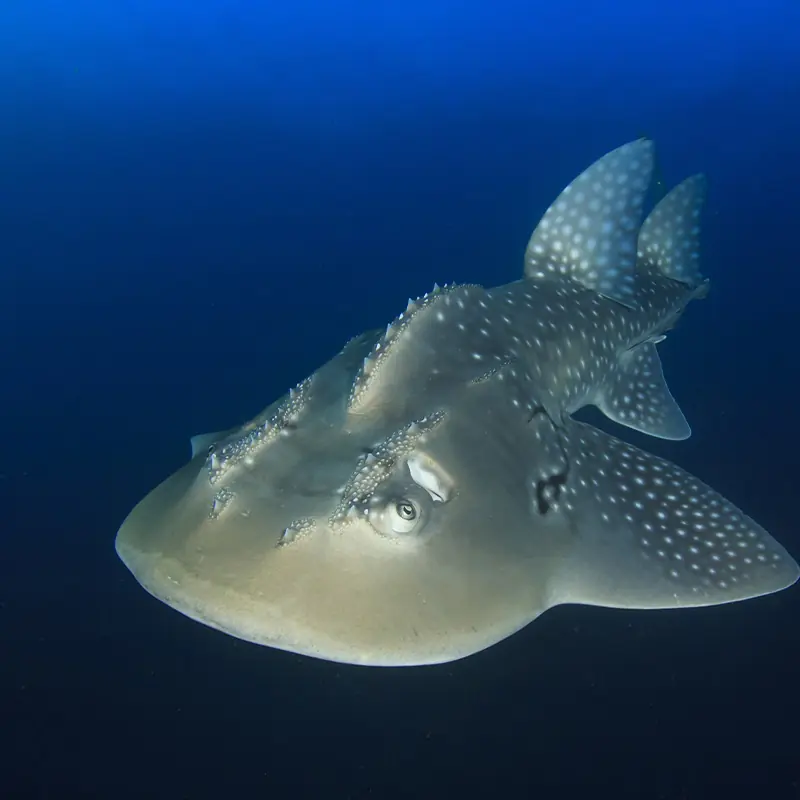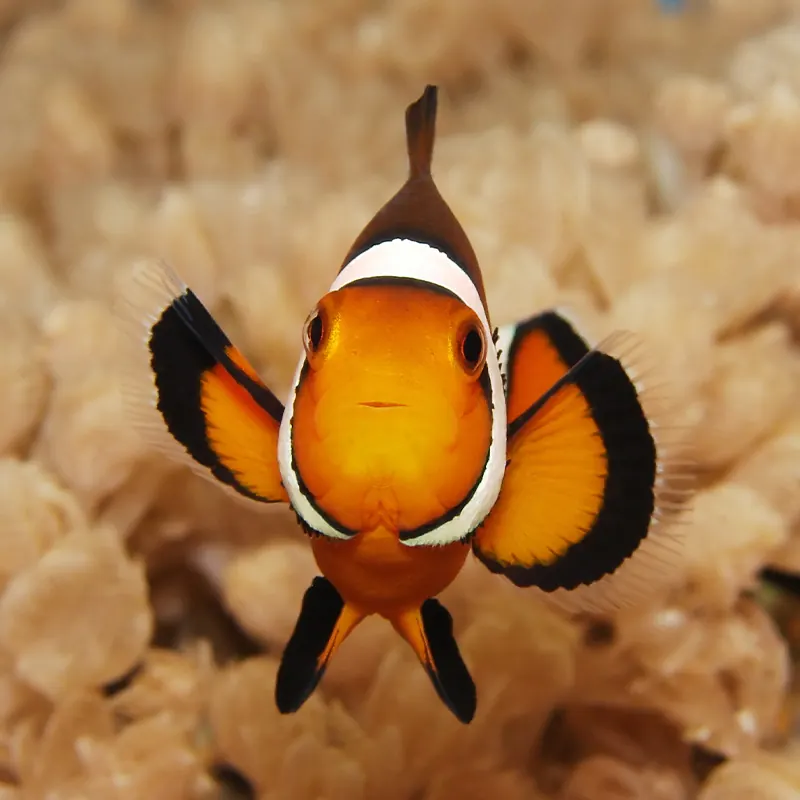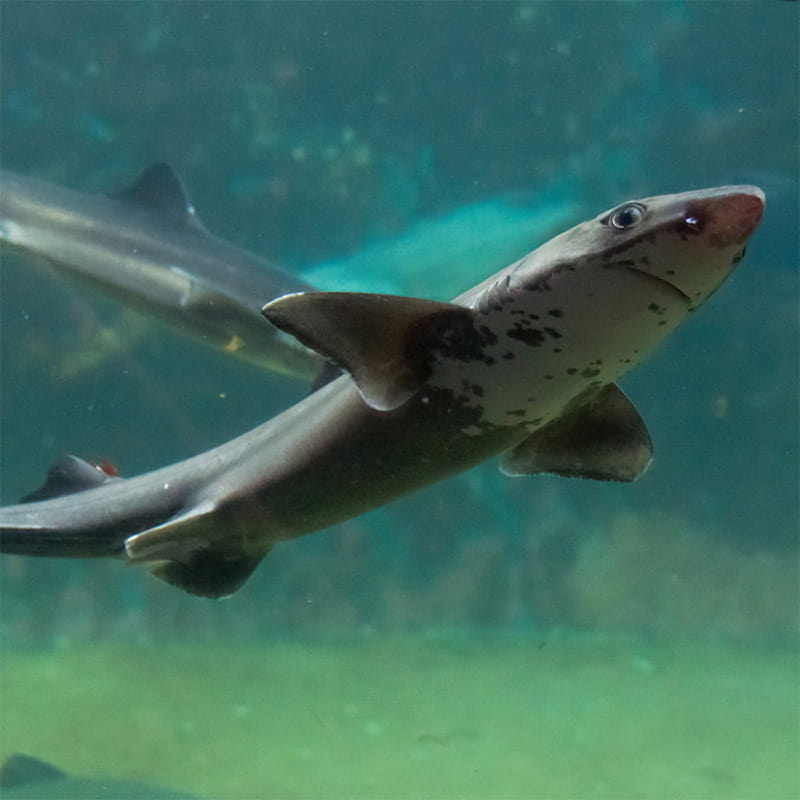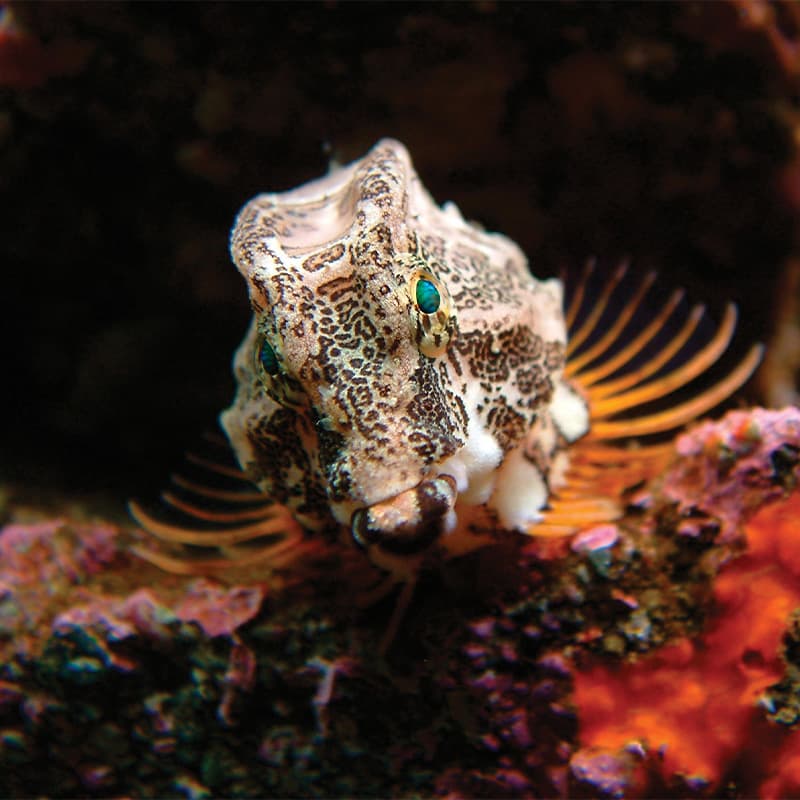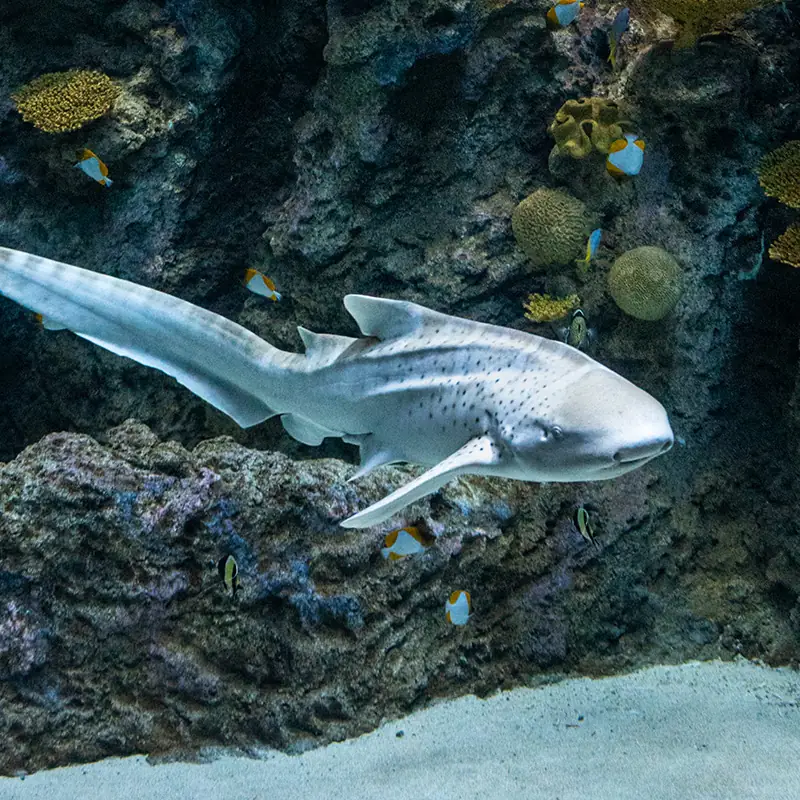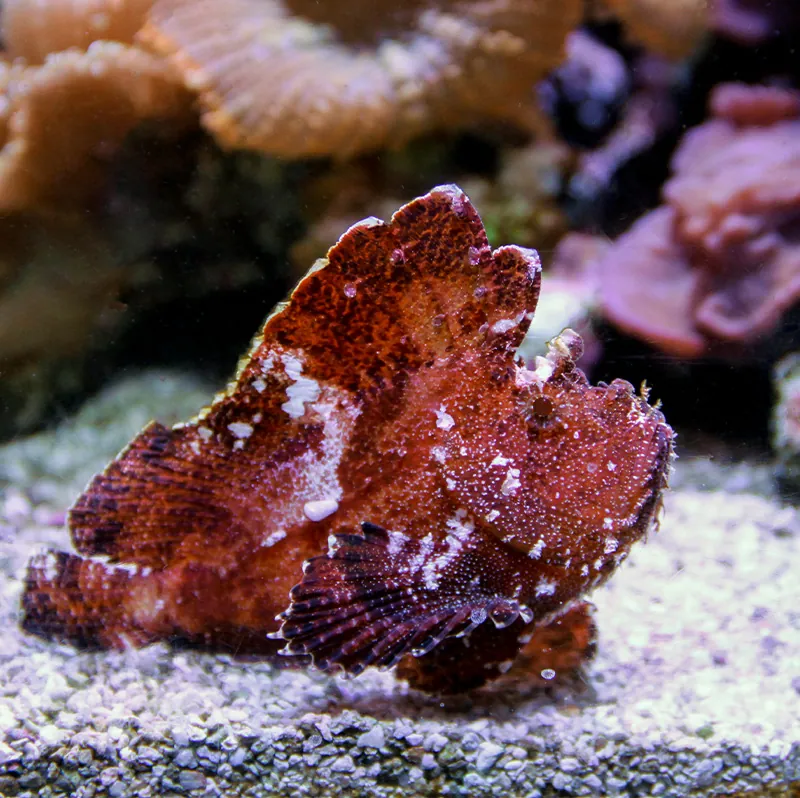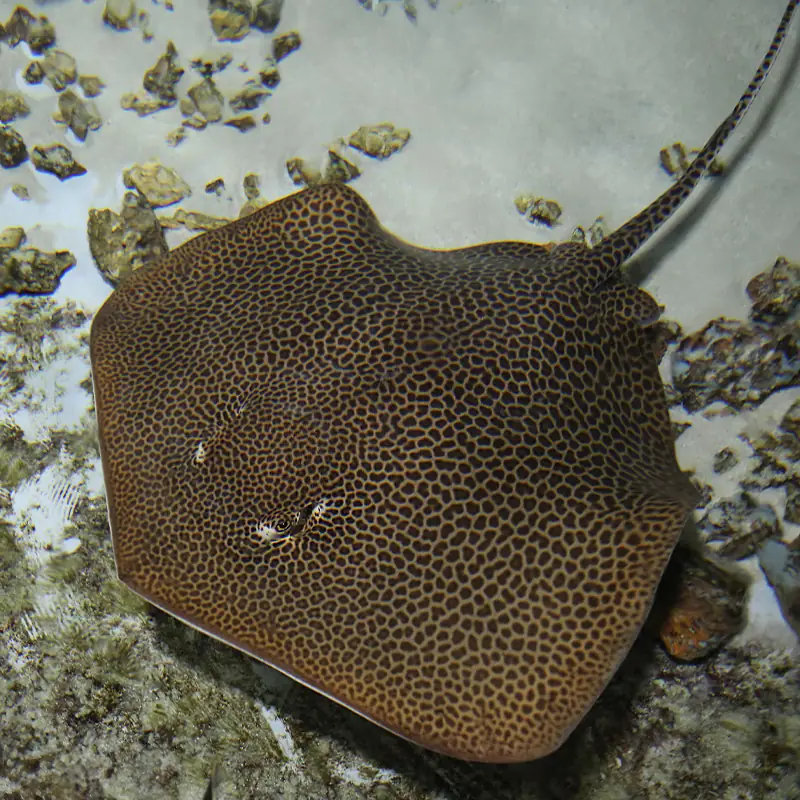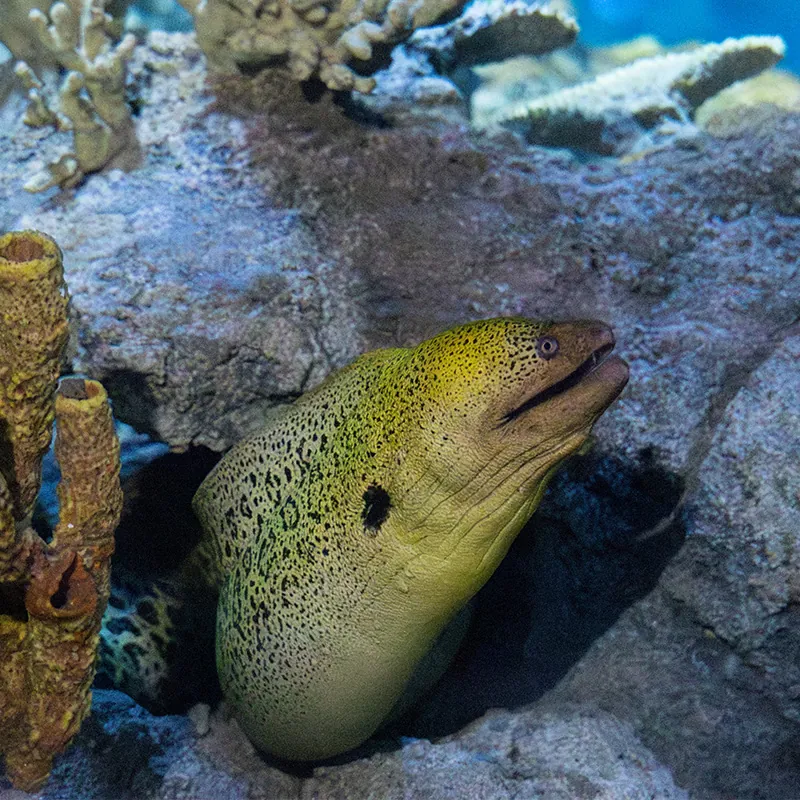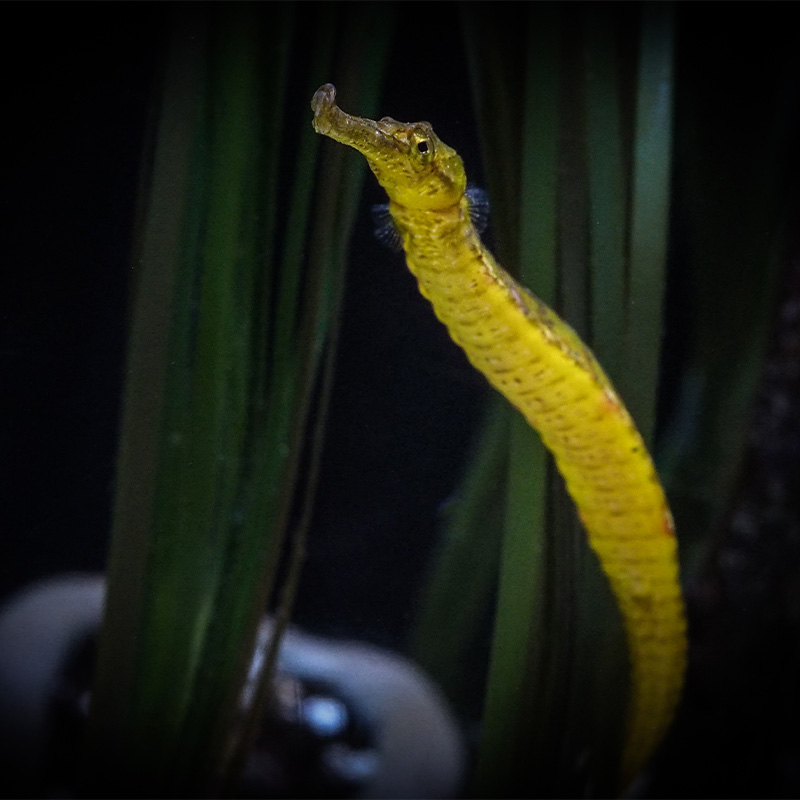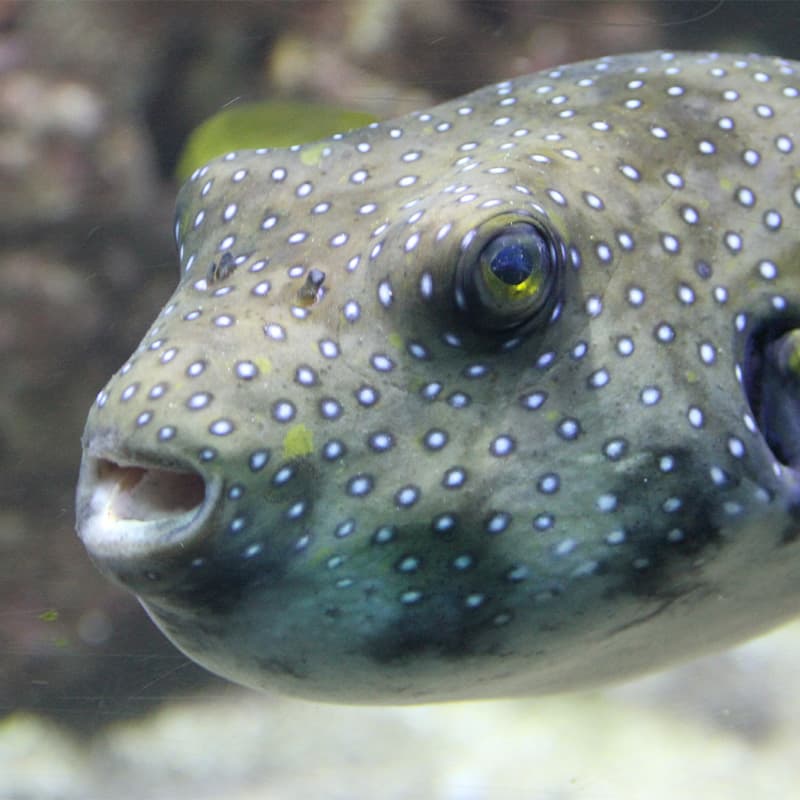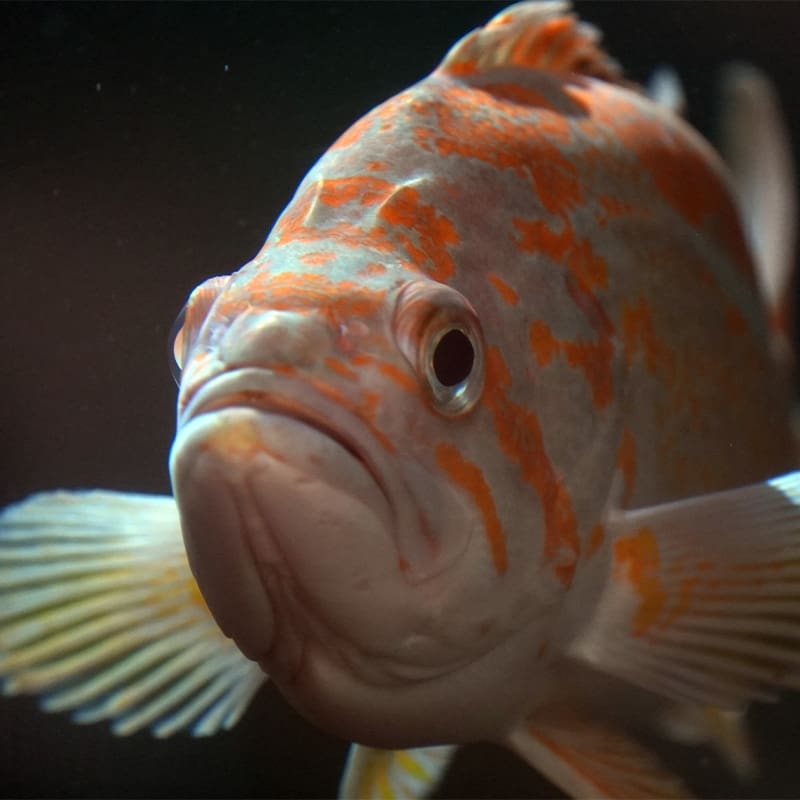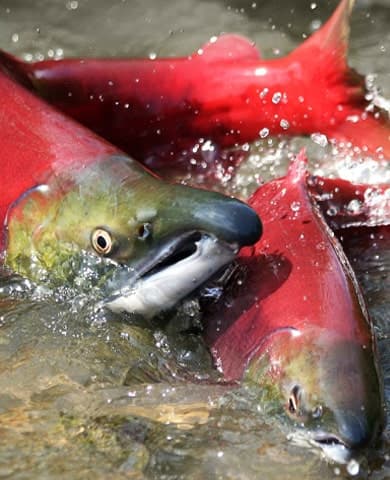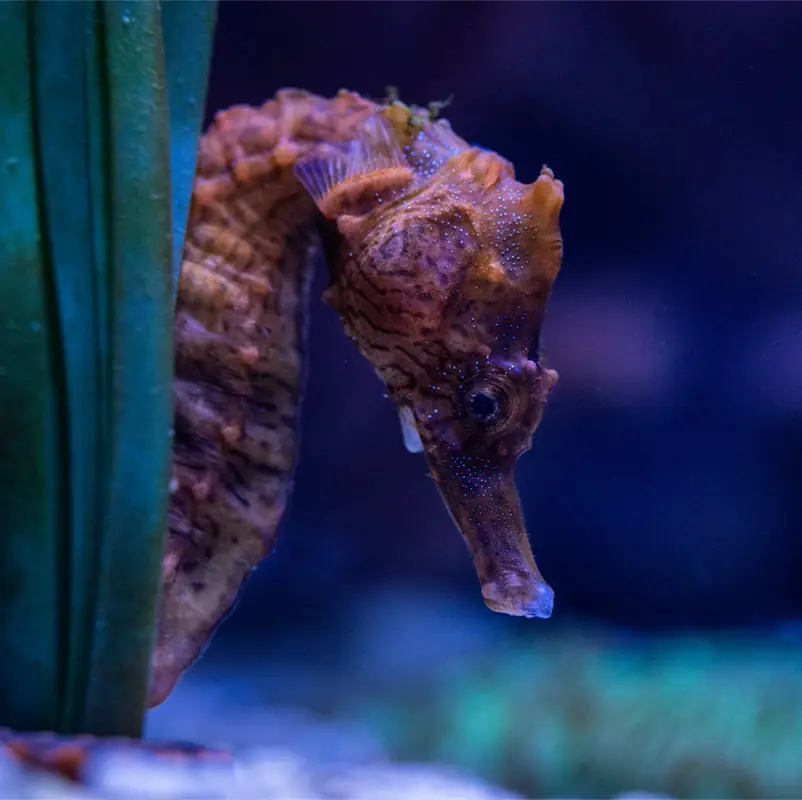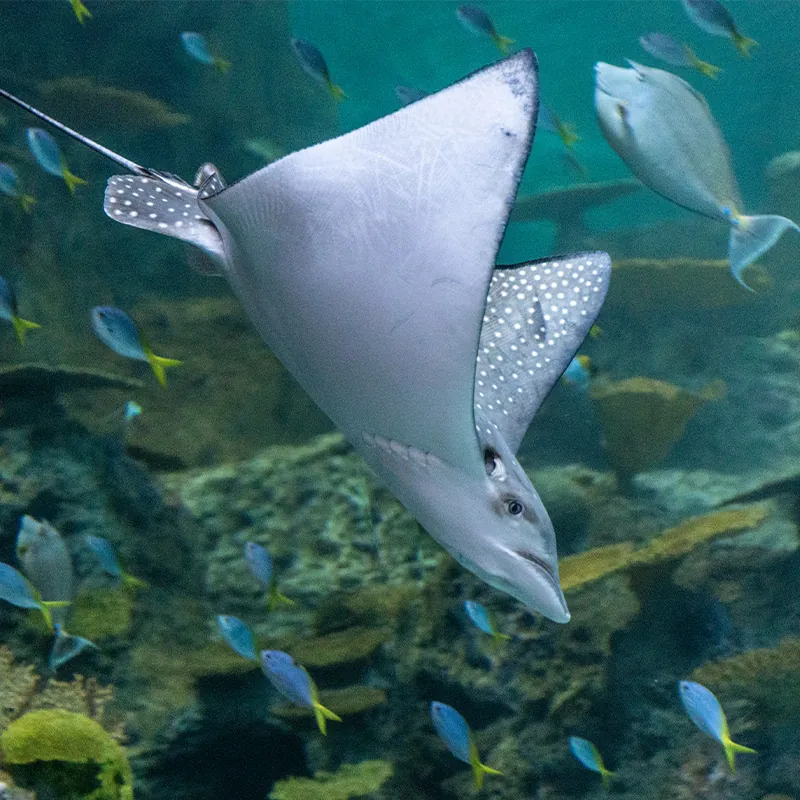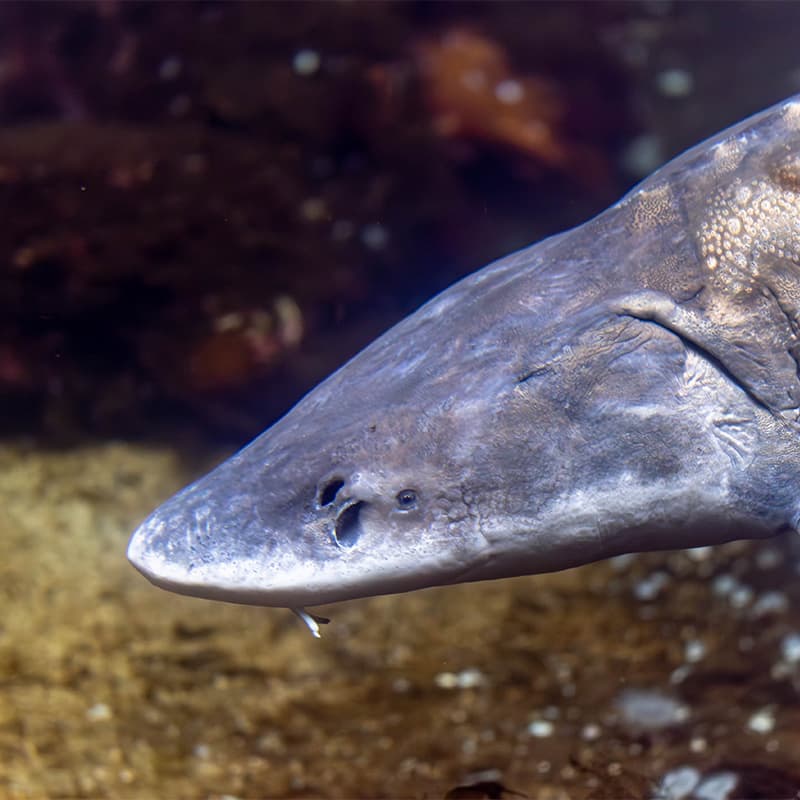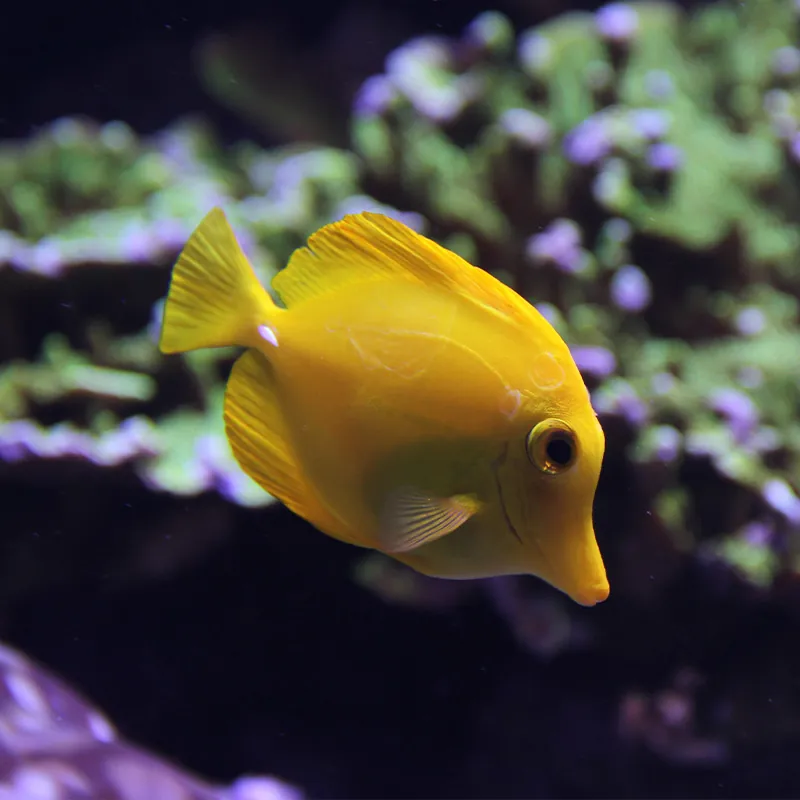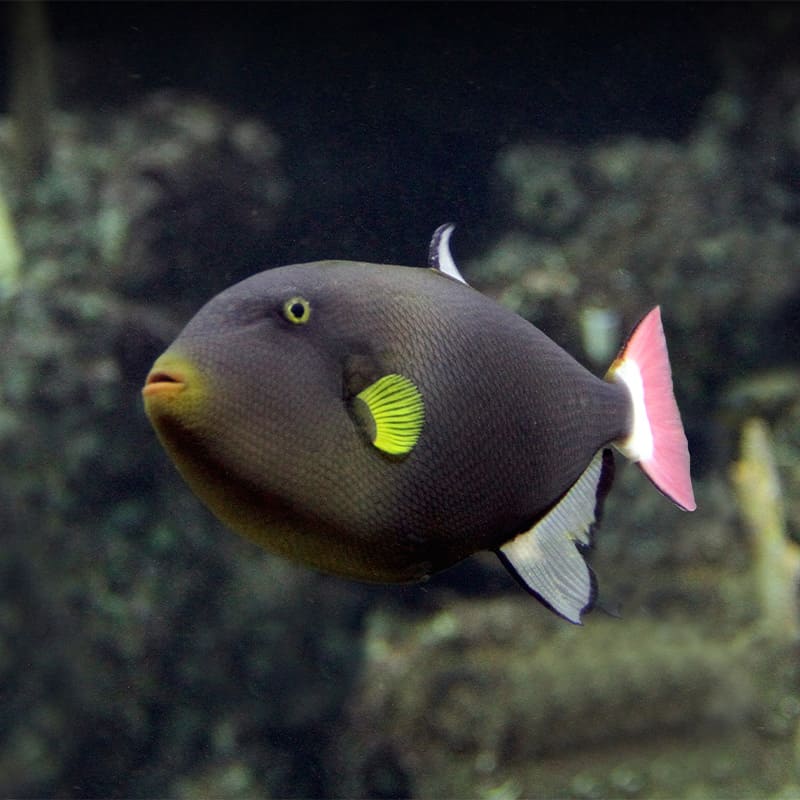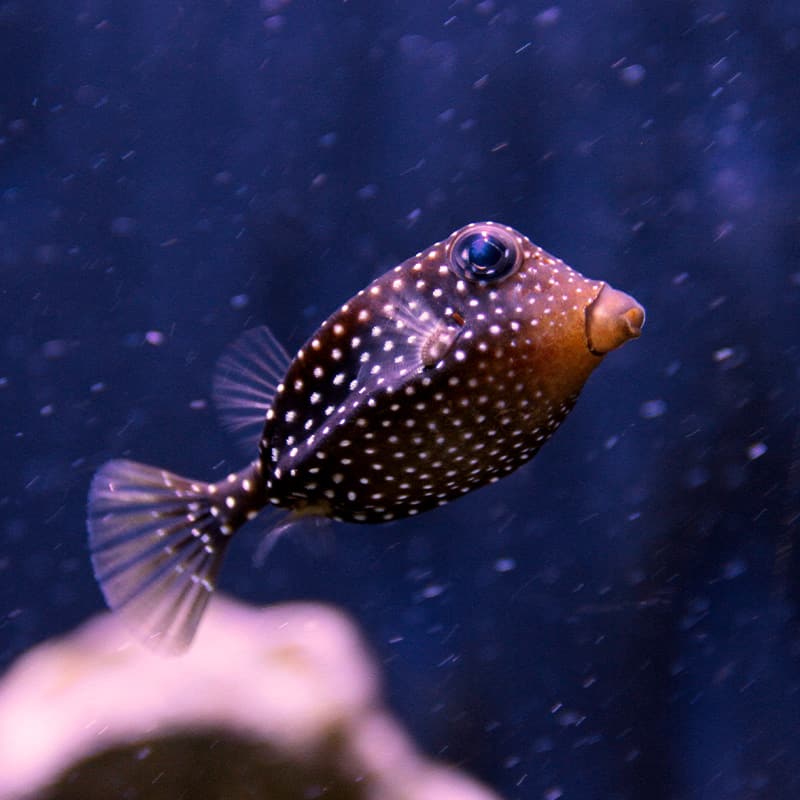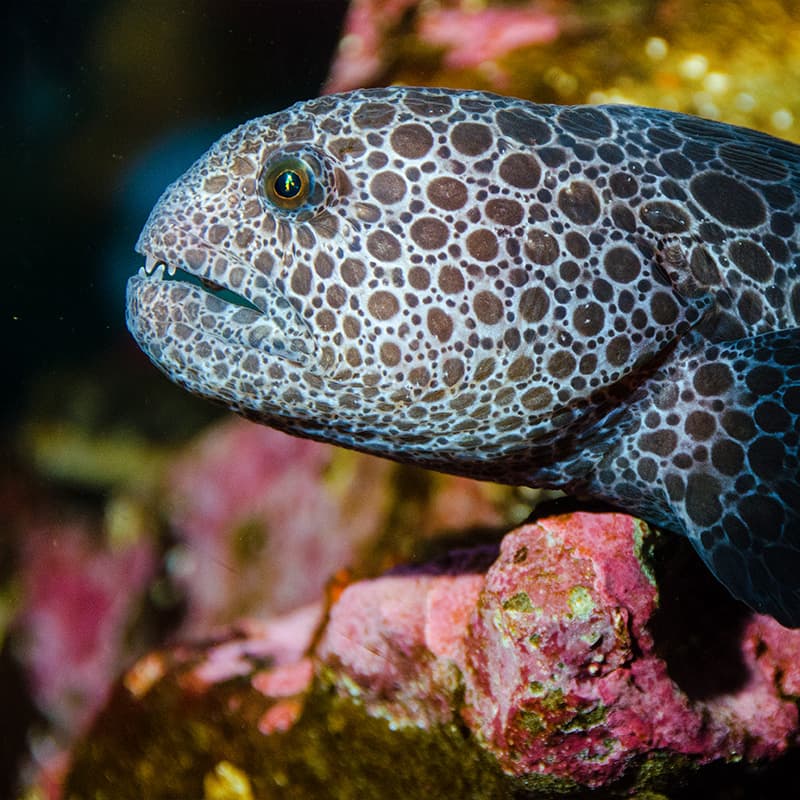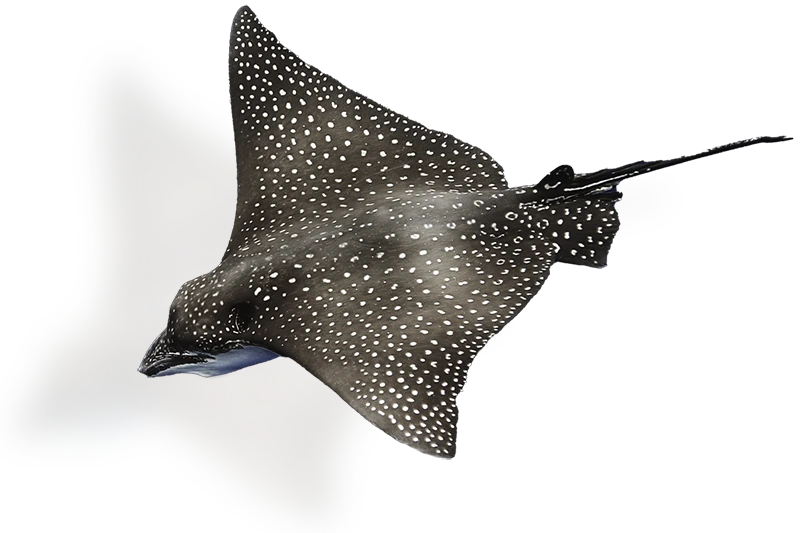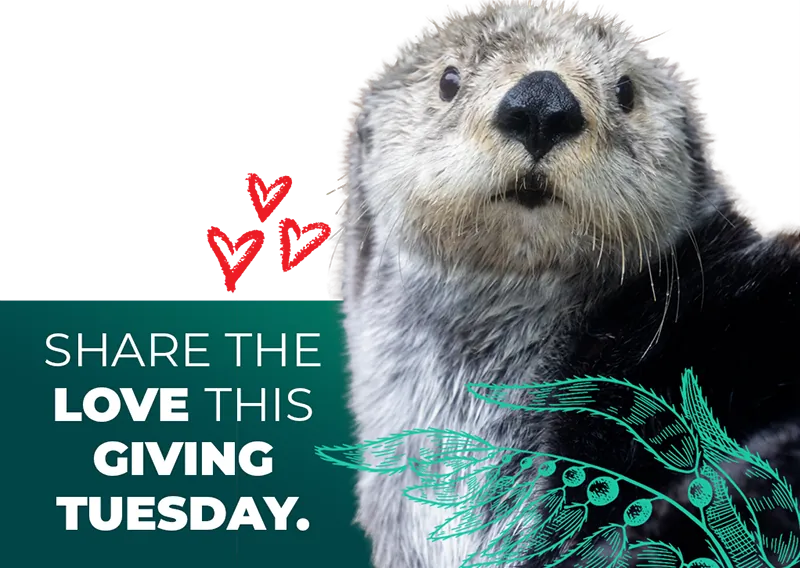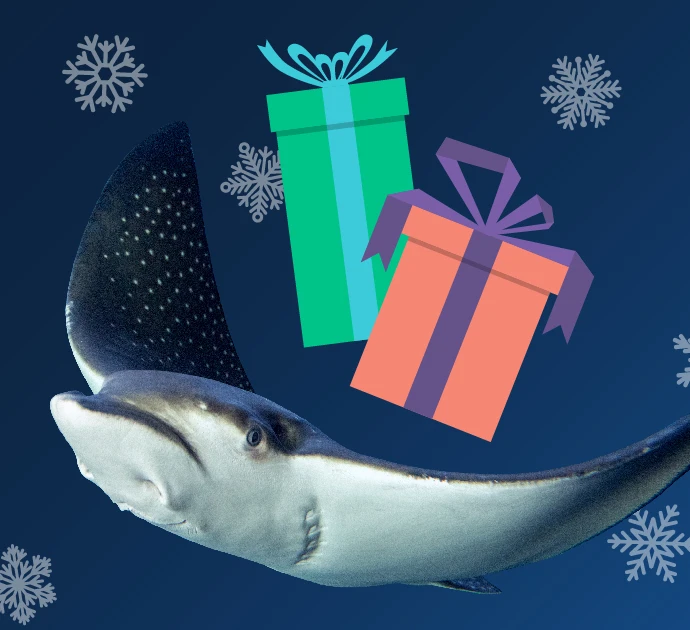- Fish
Big skate
How big is "big"?
The Beringraja binoculata, or big skate, is found along the Pacific Coast—including in the waters of Puget Sound and the Salish Sea—and is the largest skate species in North America. They’ve been recorded up to eight feet long and weighing 200 pounds, with the average falling under six feet long and 110 pounds. They live along the sandy seafloor from the intertidal zone to a depth of 390 feet, eating shrimp, worms, clams and some fish.
At the Aquarium
- Underwater Dome, Pier 60
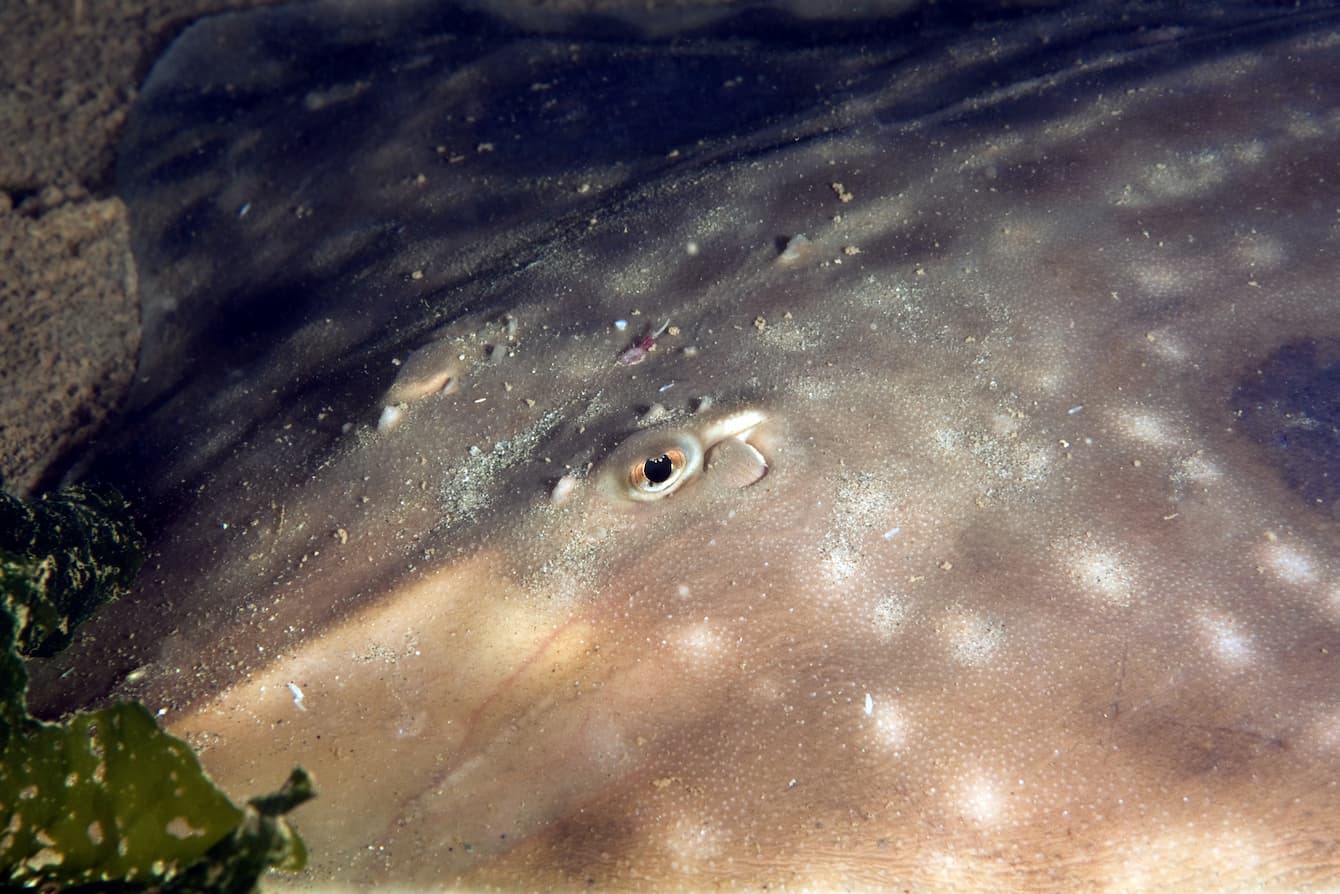
Breathing top to bottom
Big skates are typically found hidden in the sand and mud on the seafloor, with only their eyes protruding. So how do they breathe? They take water in through spiracles (modified gill slits) on the tops of their bodies, then push it out through gills on the bottoms of their bodies—which also aids in the burying process. It’s a win-win system!
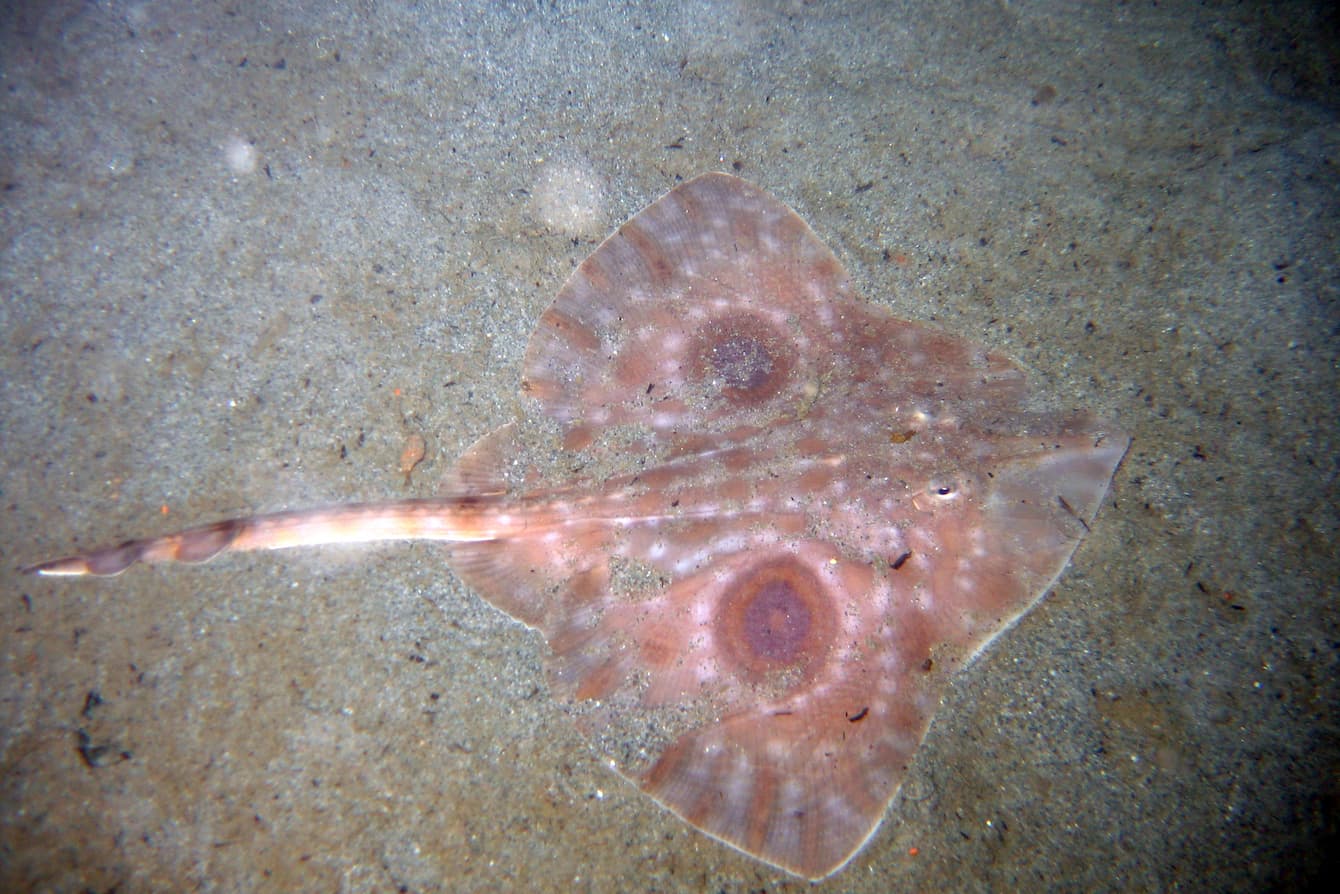
Self-protection experts
The word “binoculata” from the big skate’s scientific name comes from the Latin “bi,” meaning “two,” and “oculatus,” meaning “eyed.” This refers to the two large spots on the skate’s fins, which resemble eyes. Scientists think these "eyes" might confuse predators or make a smaller skate look bigger, and therefore less vulnerable to a predator, such as a shark. There’s more! To avoid predators, not only do these skates bury themselves on the seafloor—their mottled gray bodies serve as camouflage and spines along their upper bodies offer protection as well.
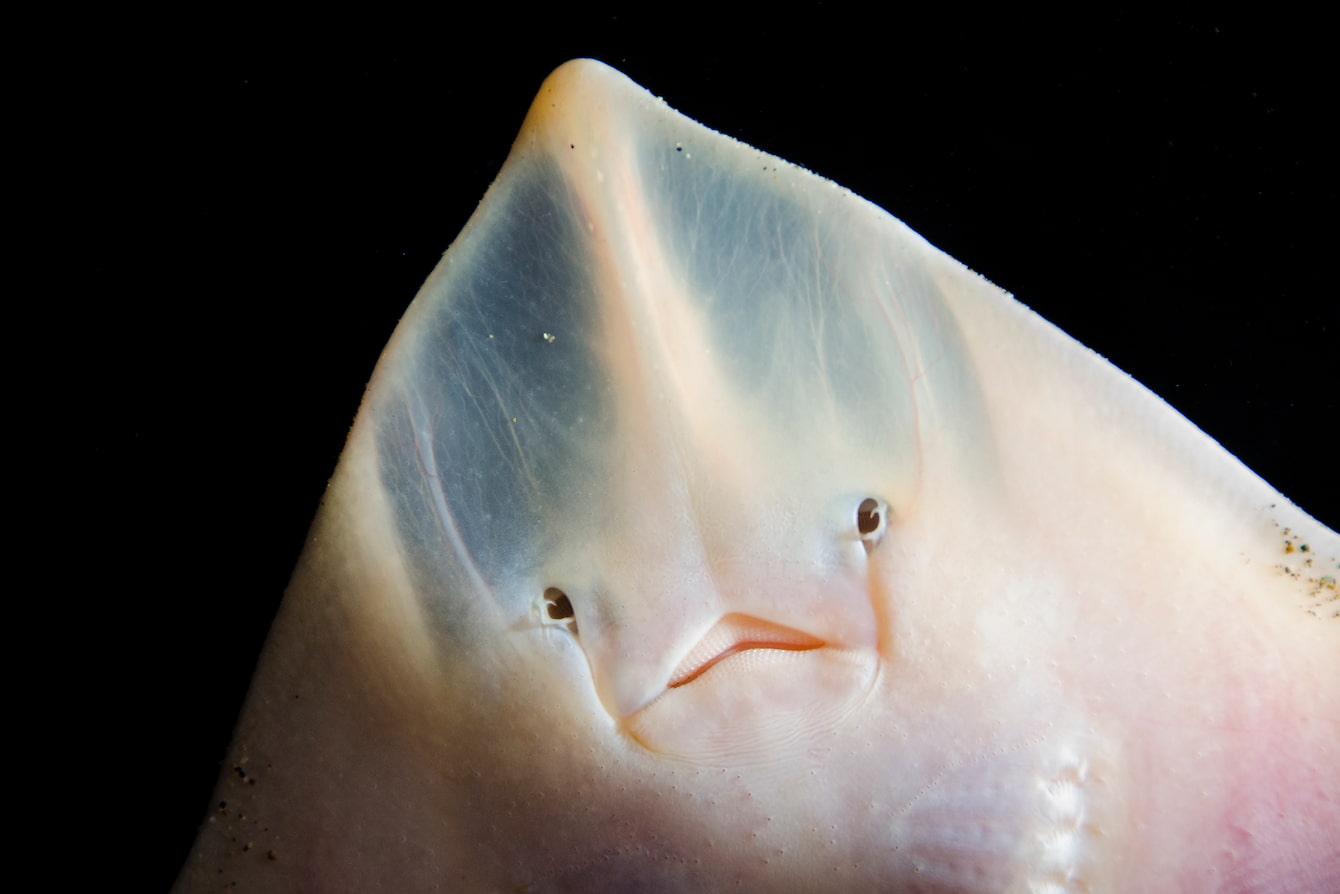
The dangers of late maturity
Big skates live, on average, between 15 and 26 years, and they mature later in life (after 12 or 13 years for females, seven or eight years for males). This leads them to produce fewer offspring than other kinds of fish, which makes them especially vulnerable to overfishing. And, because they spend so much time on the seafloor, they’re at risk of being taken as bycatch by bottom trawlers.
It’s a family (conservation) affair
Big skates are elasmobranchs, meaning fish with skeletons made of cartilage, not bone—and they’re related to rays. Unfortunately many species of rays and skates are threatened or endangered. One example, the common skate (Dipturus batis) is now listed as critically endangered by the International Union for Conservation of Nature (IUCN). In fact, the IUCN Red List includes 547 species of elasmobranchs, of which at least 20% are in danger of extinction.
You can help
Big skates, as well as every other living thing in Puget Sound, the Salish Sea and our one world ocean, rely on a healthy habitat to thrive. When we do our part to preserve and protect the marine environment, we’re also helping to care for big skates.
Quick facts
Big skates can grow to be up to eight feet long and weigh up to 200 pounds.
These animals have two large spots on their fins resembling eyes, which make them look more intimidating to potential predators!
The long average life span of big skates makes them more vulnerable to overfishing.
